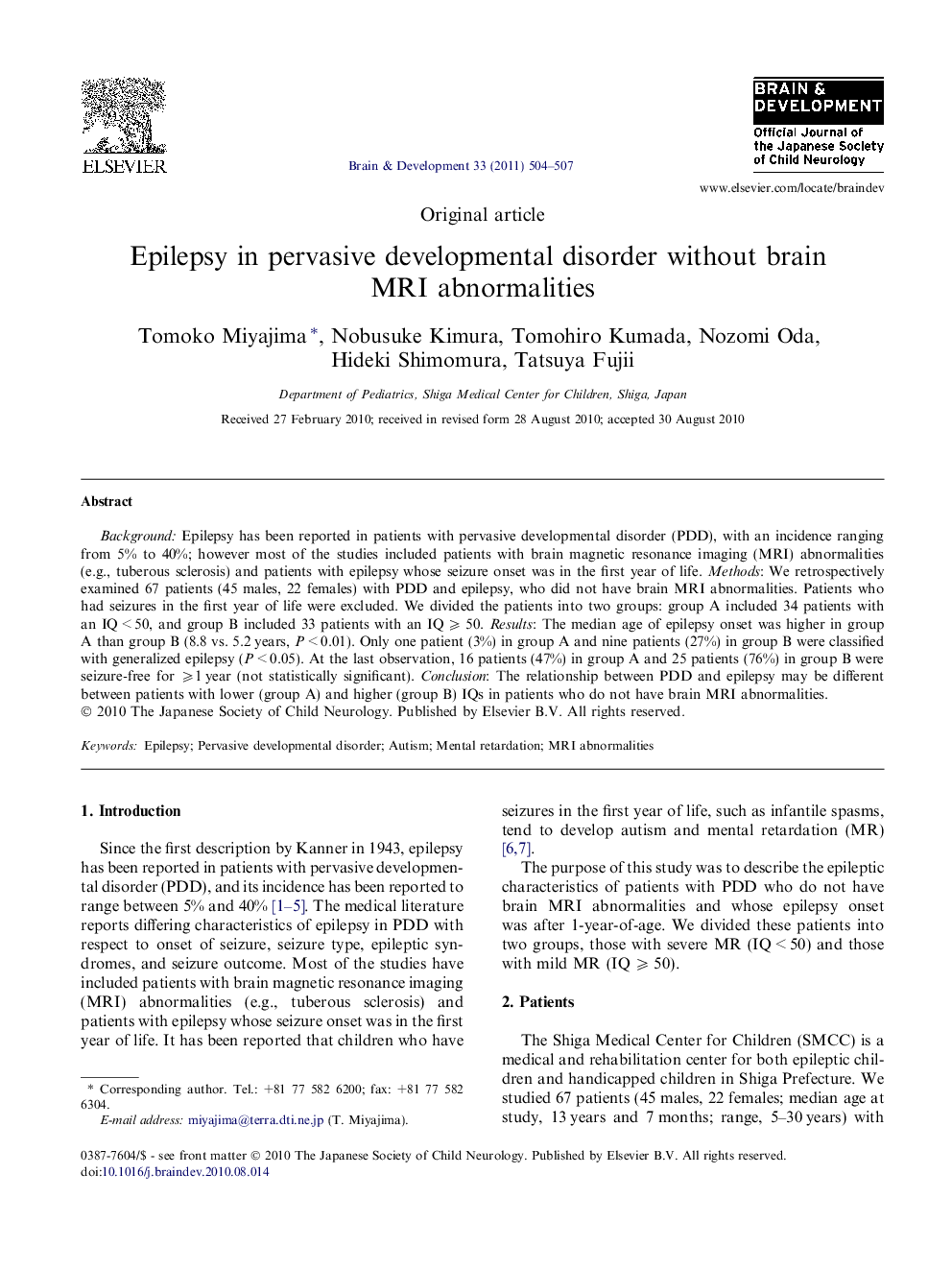| Article ID | Journal | Published Year | Pages | File Type |
|---|---|---|---|---|
| 3037582 | Brain and Development | 2011 | 4 Pages |
Background: Epilepsy has been reported in patients with pervasive developmental disorder (PDD), with an incidence ranging from 5% to 40%; however most of the studies included patients with brain magnetic resonance imaging (MRI) abnormalities (e.g., tuberous sclerosis) and patients with epilepsy whose seizure onset was in the first year of life. Methods: We retrospectively examined 67 patients (45 males, 22 females) with PDD and epilepsy, who did not have brain MRI abnormalities. Patients who had seizures in the first year of life were excluded. We divided the patients into two groups: group A included 34 patients with an IQ < 50, and group B included 33 patients with an IQ ⩾ 50. Results: The median age of epilepsy onset was higher in group A than group B (8.8 vs. 5.2 years, P < 0.01). Only one patient (3%) in group A and nine patients (27%) in group B were classified with generalized epilepsy (P < 0.05). At the last observation, 16 patients (47%) in group A and 25 patients (76%) in group B were seizure-free for ⩾1 year (not statistically significant). Conclusion: The relationship between PDD and epilepsy may be different between patients with lower (group A) and higher (group B) IQs in patients who do not have brain MRI abnormalities.
